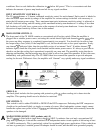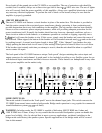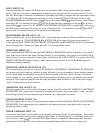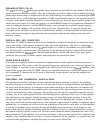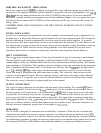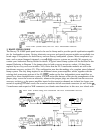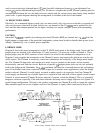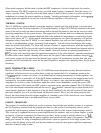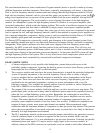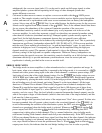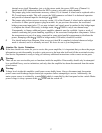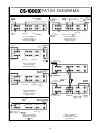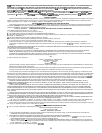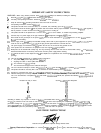
5.
unbalanced), the crossover input jacks (13) can be used to patch out full-range signals to other
amplifier/speaker systems that are operating in full range or other biamped systems that
require different crossovers.
Care must be taken never to remove or replace a crossover module with the
CS
1000X power
switch on. The complex circuitry used in the crossover modules receives bipolar power through the
A
socket, and removal or replacement could cause severe transients that can destroy the loudspeaker
system. Always turn off the
CS
1000X first. As an added feature, the bipolar power for the crossover
islands can be supplied from either channel of the
CS
1000X. Thus, if one channel should shut down
for any reason, the redundancy of the system will maintain operation of the crossovers.
6.
The individual sensitivity controls on each channel play a very important role in the use of the
crossover modules. As such, they represent a signal loss when they are operated at another setting
other than full clockwise (maximum sensitivity). Biamped speaker systems usually require less
signal level for the high-frequency components because they are generally more efficient.
Consequently, a system balance can be achieved by reducing the high-pass level. This is particularly
important on non-Peavey loudspeakers where the PL-500, PL-800 or PL- 1200 crossover modules
must be used. These modules are referred to as “no pad and equalization” types. As such, there is no
reduction in high-pass level. Consequently, the pad must be accomplished using the high-pass
channel sensitivity control. The amount of pad required is always the difference between the
efficiency ratings of the high and low speaker components. Whenever Peavey loudspeakers are
operated using the special crossovers, the sensitivity controls should be set at full-clockwise settings
(maximum sensitivity) to provide maximum system headroom, since the correct pad and
equalization is already provided in the crossover module itself.
BRIDGE MODE NOTES
1.
The bridge mode on stereo amplifiers is often misunderstood as to actual operation and usage. In
basic terms, when a two-channel amplifier is operated in the bridge mode, it is converted to a
single-
channel unit with a power rating equal to the sum of both channels’ continuous power ratings, at a
load rating of twice that of the single-channel ratings. For the
CS
1000X,
the bridge ratings are now
1000 W RMS into 8 ohms and 1500 W RMS into 4 ohms (minimum load). Bridge-mode operation
is accomplished by placing the mode switch (10) in the bridge position, connecting the load between
the red binding posts of each channel, and using Channel A as the input channel. All the input
functions of Channel B are defeated. What actually happens from a technical standpoint is that
Channel B is supplied an input signal that is equal in level but is 180 degrees out of phase from
that of the Channel A input signal (i.e., when Channel A’s signal is positive, Channel B’s signal is
negative, and vice versa). Thus, the load (which is connected between the channel outputs) sees the
sum of the output voltages of both channels (which is then twice that of the single channel), and this
load must be 4 ohms or greater.
2.
For proper bridge-mode operation, both wires of the output must “float” above ground. If either wire
becomes grounded, this will present a short circuit to the associated channel of the
CS
1000X. As
an aid in determining the condition of the distribution system, the DDT activation LEDs on both
channels are operational when the bridge mode is selected. Whenever the
CS
1000X reaches
full-
power output, both DDT activation LEDs should flash simultaneously, indicating that DDT
compression is taking place in both channels. This is a normal indication, since in bridge mode
with normal loading, both channels should reach full power simultaneously. If the DDT activation
LED on one channel flashes at a much lower signal level than that of the other channel, this indicates
that the bridge loading is not balanced, and that one leg may have become shorted to ground. In this
case, steps should be taken to locate the problem and clear it. If both LEDs flash at relatively
low-
output power levels, this indicates that the total bridge loading is too low in value or possibly
16



